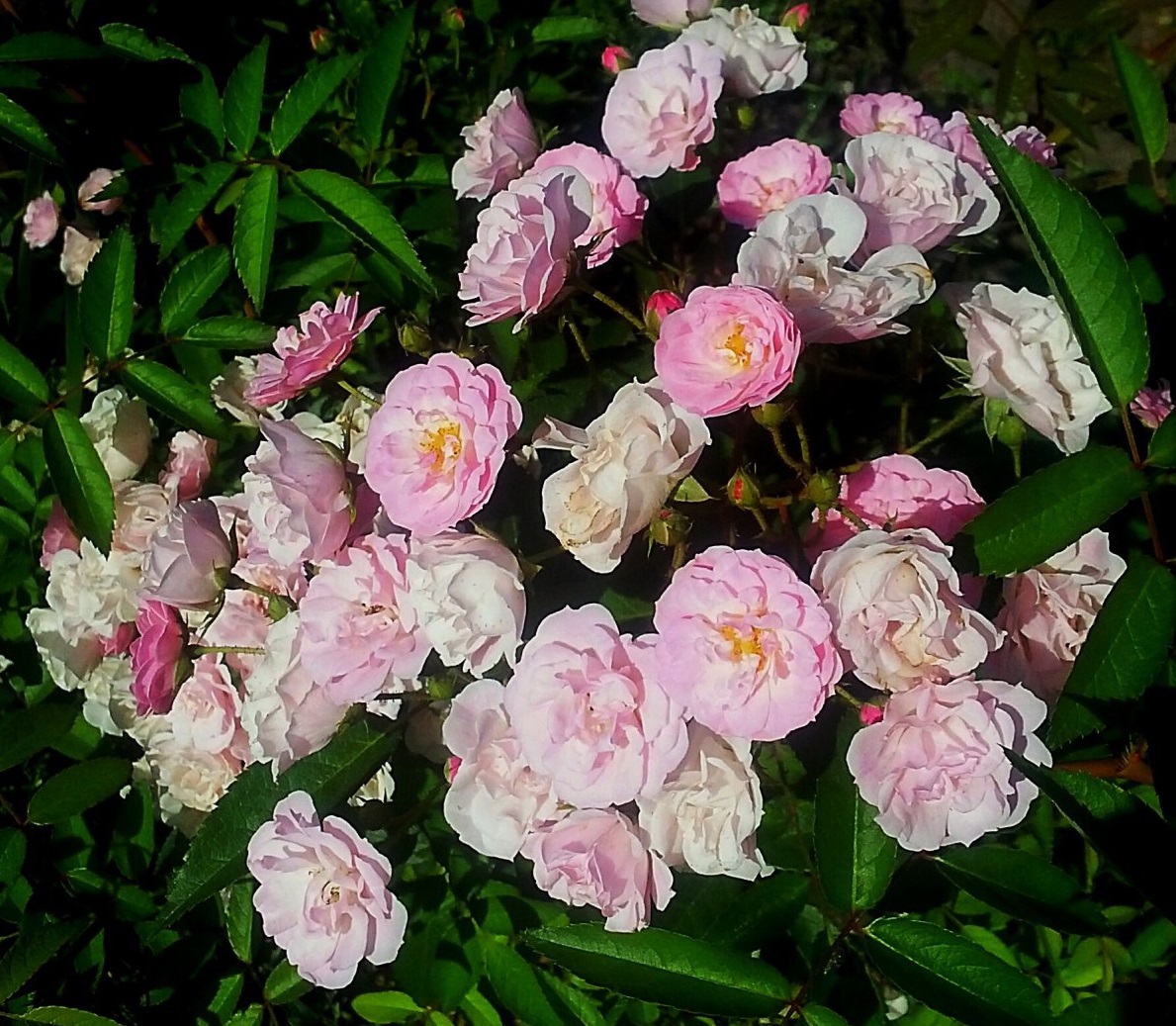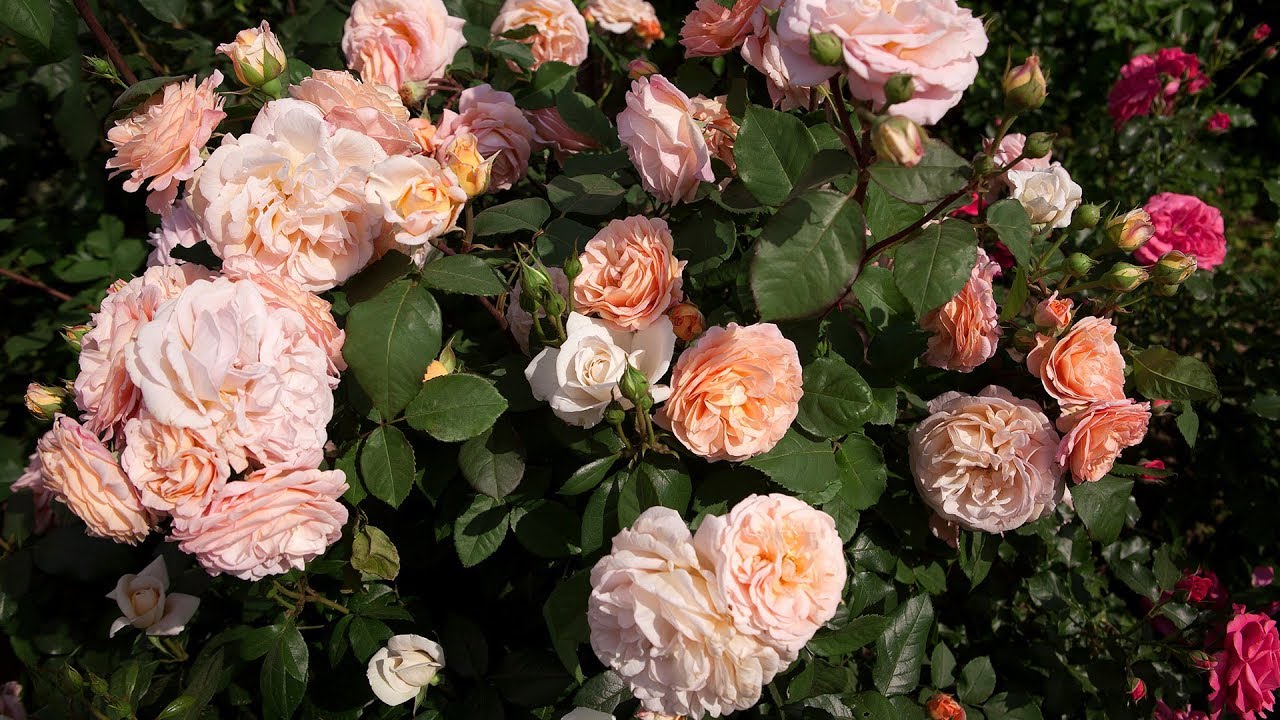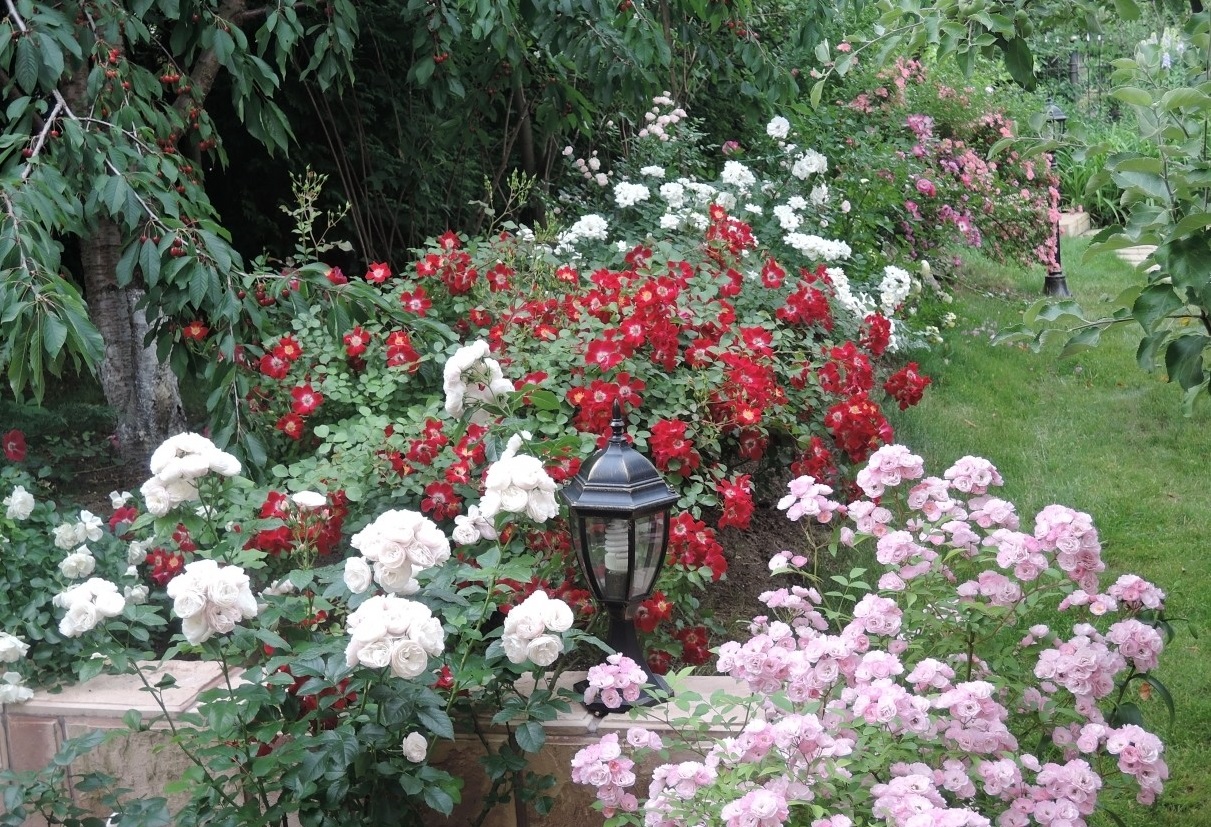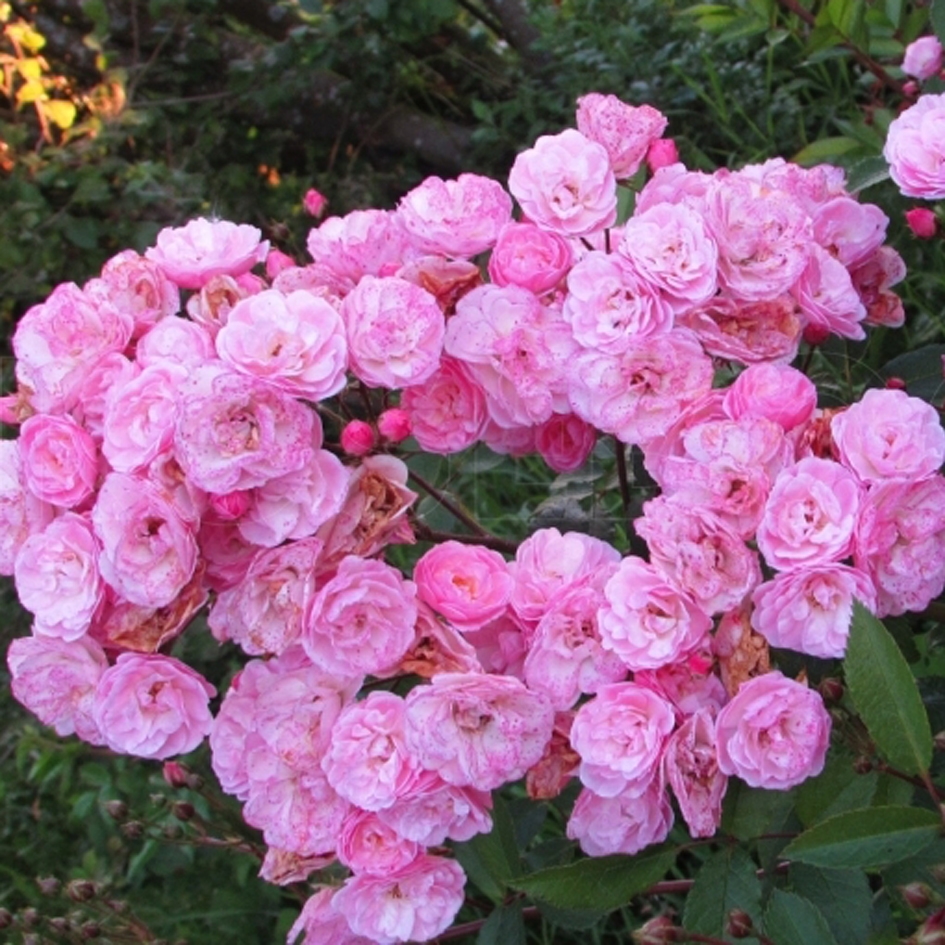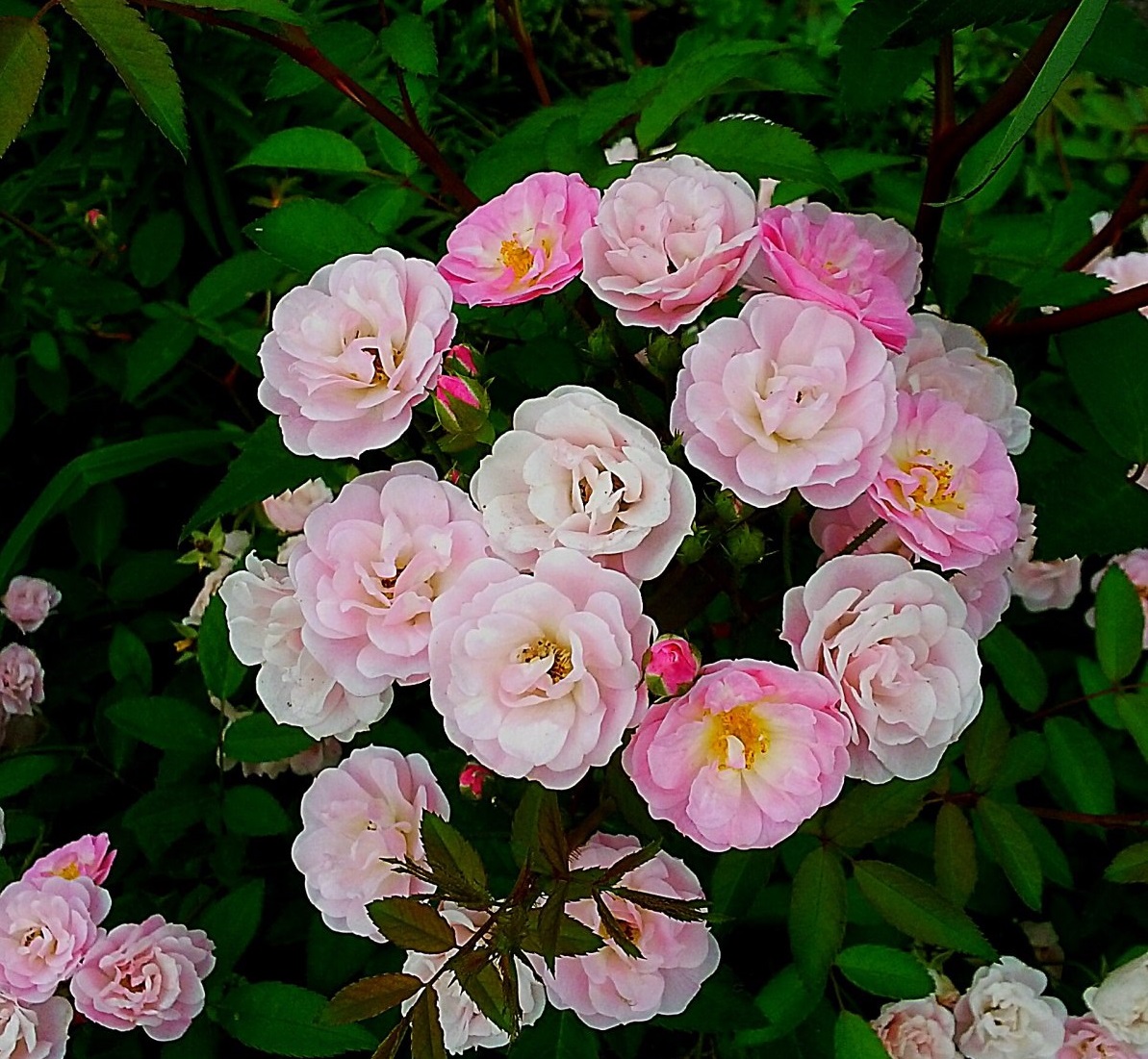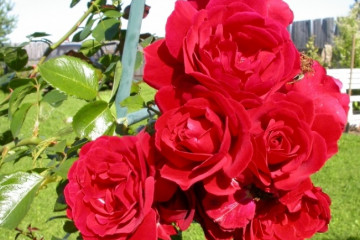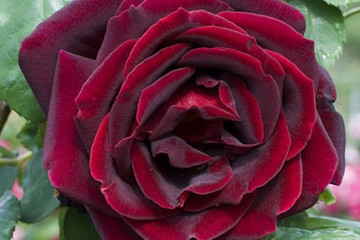Rose Heavenly Pink (Heavenly Pink) - variety description
Content:
Among the musk roses that are popular with gardeners, the Havenly Pink rose has been a constant favorite in recent decades. To achieve an intense and long-lasting flowering of a hybrid, it is necessary to create suitable conditions for plant growth.
Rose Heavenly Pink (Heavenly Pink) - what is this variety, history of creation
Rose Heavenly Pink is one of the most popular subspecies of musk roses bred in Germany at the beginning of the last century. Peter Lambert managed to create several types of hybrid plants that have an excellent appearance, take root well and do not require special care. In Russia, the most cultivated varieties are Mozart and Heavenly Pink. Rose Heavenly Pink appeared in Russia in the second half of the 1990s. In Europe, the variety has been actively used for landscape gardening since the second half of the last century.
Brief description, characteristic
The characteristic features of this variety, confirming the purity of the hybrid, are the shape of the bush, leaves and flowers. It is possible to determine that a plant belongs to the Heavenly Pink variety by such pronounced signs:
- the height of the bush of an adult plant 3-4 years old reaches about 1 meter;
- the leaves are small, with a characteristic oval shape, have a characteristic sharpening at the end of the leaf;
- leaves throughout the season have a rich dark green color;
- flowers are plain pale pink;
- the shape of the flowers resembles hydrangea flowers;
- the fragrance has subtle floral notes.
Advantages and disadvantages of the variety
Havenly Pink rose has good frost resistance and can overwinter without shelter. True, this applies to regions where the temperature does not drop below -23 ℃.
The hybrid has a long flowering throughout the season. In the southern regions, this period begins at the end of April and ends at the end of October. In the central regions, this period lasts from May to September. One of the main advantages is resistance to most diseases and pests. Has an interesting aroma typical of musks.
The disadvantages include exactingness to the soil - the plant gives preference to fertile soils rich in potassium. Therefore, during cultivation, it is necessary to constantly feed with potash fertilizers.
Needs systematic watering. During a drought, the flowers become small, especially after the formation of fruits on the shoots.
Use in landscape design
The main role of the hybrid, like the rest of the nutmeg roses, is a supporting plant. The intensive growth of flowers with a diameter of 2-3 cm looks great as a background for the main composition. The size of an adult bush reaches 1.5-2 meters in diameter.
The plant is used in park design as a zoning tool. Roses look impressive as a culture planted along wrought-iron fences - with a pale pink color emphasizing the beauty of artistic metal.
Growing a flower how to plant it in open ground
Planting a plant with seedlings is considered optimal. However, enthusiasts use other methods of growing roses.
In what form is the landing
For breeding, they use traditional methods for growing roses - layering, cuttings and growing seedlings from seeds. Seed propagation is the most time consuming method and requires a lot of care and patience. Seeds are harvested in the fall and, after drying and disinfection, are sown in a greenhouse. After emergence, transplanted into a container for distillation. With the onset of spring, hardening is carried out. Seedlings are planted from seeds usually in mid-June, when the threat of frost has passed.
Propagated by layering in the presence of a large number of young healthy shoots. The shoot is bent to the ground and a 10-15 cm segment is fixed with staples. The top of the shoot is raised and fixed vertically. Above the bent segment, an earthen hill with a height of 10-15 cm of densely rammed wet earth is formed. Usually, the cuttings are formed in May-June during the active growing season, before the onset of the flowering period.
When cuttings cut off the shoot with 5-7 nodes of leaves. It is dipped with the cut end into the root solution. After that, a cutting is planted in the prepared hole so that 3-4 renal nodes are underground. After backfilling with soil, the cutting is covered with a glass jar and watered abundantly. After 21-28 days, when new shoots appear, the jar can be removed.
What time is the landing
The optimal time for planting seeds for obtaining seedlings is the beginning of March. When forming a bush by layering, all work is carried out after the end of the first stage of flowering - depending on the region, this can be May or June.
When grafting, this is done in June-July in the summer. You can use material from spring pruning, then forcing begins in early March, and planting in open ground is carried out at the end of June.
Location selection
Rose is very demanding on the choice of the place where it will grow and the quality of the soil. When looking for a place for a bush, it is better to pay attention to areas with partial shade or where the sun hits only part of the day.
The most comfortable are fertile soils saturated with potassium and phosphorus. The plant does not tolerate drought well, which is why it is necessary to systematically water and mulch the soil under the bush.
How to prepare the soil and flower for planting
Before planting, the seedling is placed in a root solution for 4-6 hours. This will optimize the growth of the plant's root system. For planting, a soil mixture is prepared from 2 parts of compost, 2 parts of fertile soil and 1 part of sand. When planting, it is recommended to prepare 300-400 grams of fresh wood ash to add to the potting mix.
Planting procedure step by step
When preparing the planting pit, the size of the seedling must be taken into account. The hole should be such that the growth point of the shoots is 1-2 cm above the ground level. Further, the landing algorithm looks like this:
- a pit of the required depth comes off;
- in the middle of the pit, a mound is formed from the prepared soil for installing a seedling;
- a seedling is installed on the mound, and the roots are straightened along the sides of the tubercle;
- the pit is backfilled with soil, the soil is tamped and the hole is formed for irrigation;
- after watering, mulching is done.
Plant care
Starting from the first days after planting, the plant must be monitored and correctly performed all agrotechnical techniques - watering, fertilizing, mulching, pruning.
Watering rules and humidity
Hybrid musk rose varieties are demanding watering.They prefer slightly moist, but not waterlogged soil. Therefore, you need to make it a rule to loosen and mulch the soil on the second day after watering.
Top dressing and soil quality
Along with the introduction of mineral, phosphorus and potash fertilizers in spring and autumn, it is recommended to regularly apply wood ash once every 15-20 days and feed with a solution of organic fertilizers.
Pruning and replanting
Heavenly Pink musk rose is characterized by intensive growth, which is why pruning is done for the correct formation of the bush in order to form the correct bush during the summer season.
Features of wintering a flower
An adult plant is usually not covered for the winter. But it is recommended to cover young bushes with spruce branches or straw. The hybrid is considered frost-resistant - it can withstand frosts up to 23-25 ℃ below zero.
Blooming rose
Rose Heavenly Pink has a long flowering period from mid-May to early October, depending on the region of growth.
A period of activity and rest
The description of the variety confirms that the period of activity is from early May to early October. The dormant period is from mid-October to the end of April.
Care during and after flowering
During the flowering period, it is recommended to monitor the watering regime of the plant and cut off the faded buds in a timely manner. Inspect the plant periodically to identify pests and diseases.
What to do if it does not bloom, possible reasons
The main reason for the absence of flowers on the shrub is unfavorable weather conditions - a protracted spring, lack of sufficient moisture and an incorrectly chosen planting site.
Flower propagation
Rose Haveli Pink reproduces well by cuttings and layering. Growing seedlings from seeds is a very painstaking and difficult business, therefore it is easier and more reliable to plant cuttings. In extreme cases, the method of grafting a shoot on a decorative rosehip stem is allowed.
When is it produced
For grafting, young shoots from 2-3 summer bushes are used. It is best to do the harvesting in June-July.
Detailed description
For grafting, shoots with 5-7 bud nodes are used after the end of the flowering bud. Flowers should be easily detached from the shoot.
The stalk is cut at a 45-60 degree angle and immediately placed in a growth stimulant solution. After 4-6 hours, the plant is transferred to a container or planting site. At the cut end, the leaves are trimmed and 2-3 skin cuts are made with a sharp blade.
3-4 kidney nodes of the cuttings are buried in the ground and covered with a jar so that there is no air access. The planting site is constantly watered. After 21-28 days, after the young shoots appear, the bank is removed.
Diseases, pests and ways to control them
Most often, the plant is damaged by insects - aphids and caterpillars. For prophylaxis, it is recommended to spray with an infusion of tobacco dust or a solution of laundry soap. In case of damage to diseases, it is recommended to use complex specialized preparations for the prevention and treatment of rose diseases.
Due to its excellent aesthetic properties, unpretentiousness and a long flowering period, the Heavenly Pink rose is actively used both in decorating individual estates and in landscape gardening of city parks.
